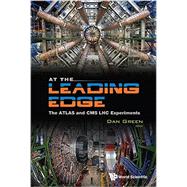
| Introduction: How Physics Defines the LHC Environment and Detectors | p. 1 |
| The CMS Pixel Detector | p. 41 |
| The Hybrid Tracking System of ATLAS | p. 69 |
| The All-Silicon Strip CMS Tracker: Microtechnology at the Macroscale | p. 95 |
| The ATLAS Electromagnetic Calorimeters: Features and Performance | p. 129 |
| The CMS Electromagnetic Calorimeter: Crystals and APD Productions | p. 155 |
| ATLAS Electronics: An Overview | p. 177 |
| Innovations in the CMS Tracker Electronics | p. 205 |
| TileCal: The Hadronic Section of the Central ATLAS Calorimeter | p. 233 |
| Innovations for the CMS HCAL | p. 259 |
| ATLAS Superconducting Toroids-The Largest Ever Built | p. 279 |
| Constructing a 4-Tesla Large Thin Solenoid At the Limit of What Can Be Safely Operated | p. 305 |
| The ATLAS Muon Spectrometer | p. 329 |
| The CMS Muon Detector: From the First Thoughts to the Final Design | p. 351 |
| The Why and How of the ATLAS Data Acquisition System | p. 391 |
| Removing The Haystack-The CMS Trigger and Data Acquisition Systems | p. 417 |
| Table of Contents provided by Ingram. All Rights Reserved. |
The New copy of this book will include any supplemental materials advertised. Please check the title of the book to determine if it should include any access cards, study guides, lab manuals, CDs, etc.
The Used, Rental and eBook copies of this book are not guaranteed to include any supplemental materials. Typically, only the book itself is included. This is true even if the title states it includes any access cards, study guides, lab manuals, CDs, etc.